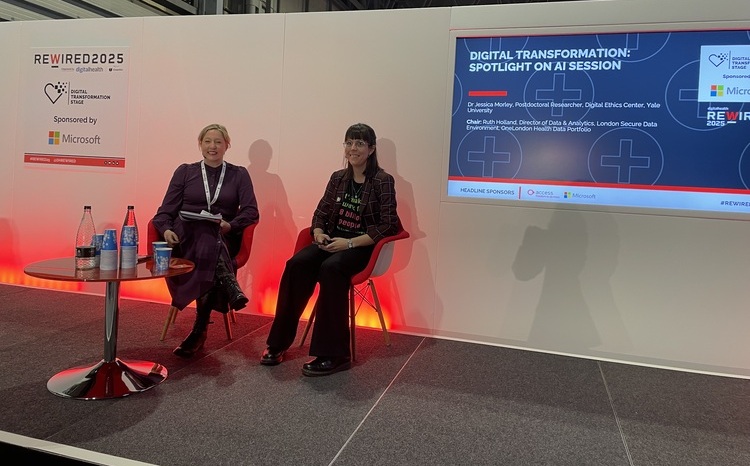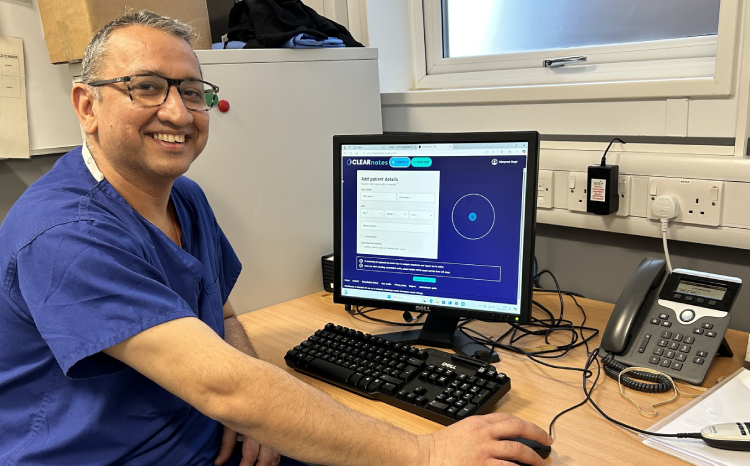Automation can assist medical practitioners but it won’t replace them
- 14 September 2021

In a feature for Digital Health, Natalie Quinn-Walker, healthcare lecturer and module leader at Arden University, explores how automation can assist medical practitioners but also why it will never replace the human doctor.
In August 2021, it was announced that a £250million framework that aims to signpost NHS organisations to intelligent automation solutions is set to be launched. The aim is to allow NHS organisations to purchase IA services from pre-approved suppliers, to relieve pressures and the backlog of administrative tasks that often delay processes and prevent healthcare professionals from doing what we need them to do: look after patients.
As we are all aware, it is much needed and is part of the push towards integrating AI and automation into the healthcare world. Over the past year, there have been delays that have led to patient concerns, which have, unfortunately in extreme cases, led to abuse and anger thrown at medical professionals. The pressures the healthcare sector is facing have been around pre-pandemic. However, the past 18 months have accelerated them, causing more concern for the NHS and the current healthcare system.
As expected, however, the word automation rings alarm bells for some – it is a term that represents a minimisation of human input, and with healthcare being patient-facing, many are worried diagnosis will go awry and patient care will fall out the window. Automation may not be the cure the NHS needs, but it has the potential to iron out many of the issues healthcare experts are facing.
Synchronised systems could save lives
Basic automation takes simple, rudimentary tasks and automates them to streamline and centralise routine tasks. This can mean having a shared messaging system, for example, instead of having information in disconnected silos.
Such an automated system could save lives. It will allow communication between pharmacists and GPs to be more transparent. For instance, a better integrated, automated system will flag up if a patient with an addiction to over-the-counter painkillers is hopping from pharmacy to pharmacy to maintain their addiction and have prescription medication. Where an individual pharmacist would not necessarily pick it up if the person was frequenting different chemists, the system would bring it to the attention of the healthcare expert, and they could then assist with the customer’s potential addiction.
Automation could act as a safety net in such cases. It could allow patients who go into a chemist with a query to be better looked after if the communication between pharmacies and GPs was more synchronised. Of course, an obvious roadblock in using such a system is GDPR and patient protection.
Automation can help those in need
Data is powerful, and the lack of human interface works to its advantage. It can connect dots that people miss, especially often hidden or subtle issues, such as abuse. Automation could pick up that a person has been in hospital over the past couple of years with a handful of different injuries and could flag it up as a potential sign for abuse, for example.
It can offer a helping hand for struggling mental health services, too. An estimated 8 million people in England with mental health problems cannot get specialist help; this is in addition to the official waiting list for NHS mental health care, which stands at 1.6 million people, including 374,000 under-18s.
Automation could check in on those on the waiting list, offering prompts and a form of interaction during a time when many are left in limbo, awaiting their turn on the never-ending list. AI cannot replace compassion, but it can be a bridge between appointments that will assist patients and help guide medical professionals and keep them up to date with their patient’s progress.
It can also make it easier for people to seek medical assistance when apprehensive about sharing their problem with a person. Automation removes the stigmatisation and prejudgments that human interaction can come with.
AI can be a medical professional’s favourite assistant
Many have seen digital tech being integrated into the medical field. Patients can use their laptops to book appointments and get text updates on when their prescription is available at the chemist. Automation could take it a step further by sifting out the people who actually need a medical appointment and those who do not.
Unnecessary visits to A&E have been estimated to cost over £100 million a year, and on primary care, there are an estimated 51 million unnecessary visits a year. Unnecessary appointments waste precious GP time, and an automated system could help filter out those who do not need an appointment, allowing time to be allocated to those who need assistance.
Of course, there are apprehensions about such a system. Computers are not perfect and can miss the signs only people will pick up on via body language and speech. Where AI may help assist those who would usually avoid calling up the GP, it may stop people, especially those uncomfortable with tech, from seeking medical help.
Nevertheless, we need not fear automation; we will always need human interaction, and some patients will always pick a person approach over a computer. It has the power to alleviate some of the many responsibilities healthcare experts have, allowing them to do what they are best at: helping people get better.




